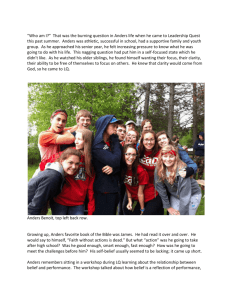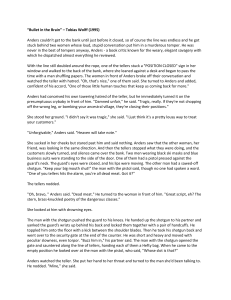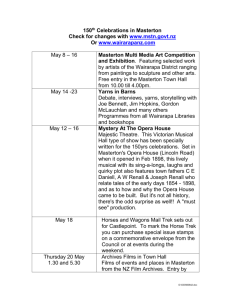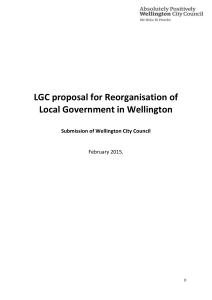Apr 2006 Castlepoint Nitrogen article
advertisement
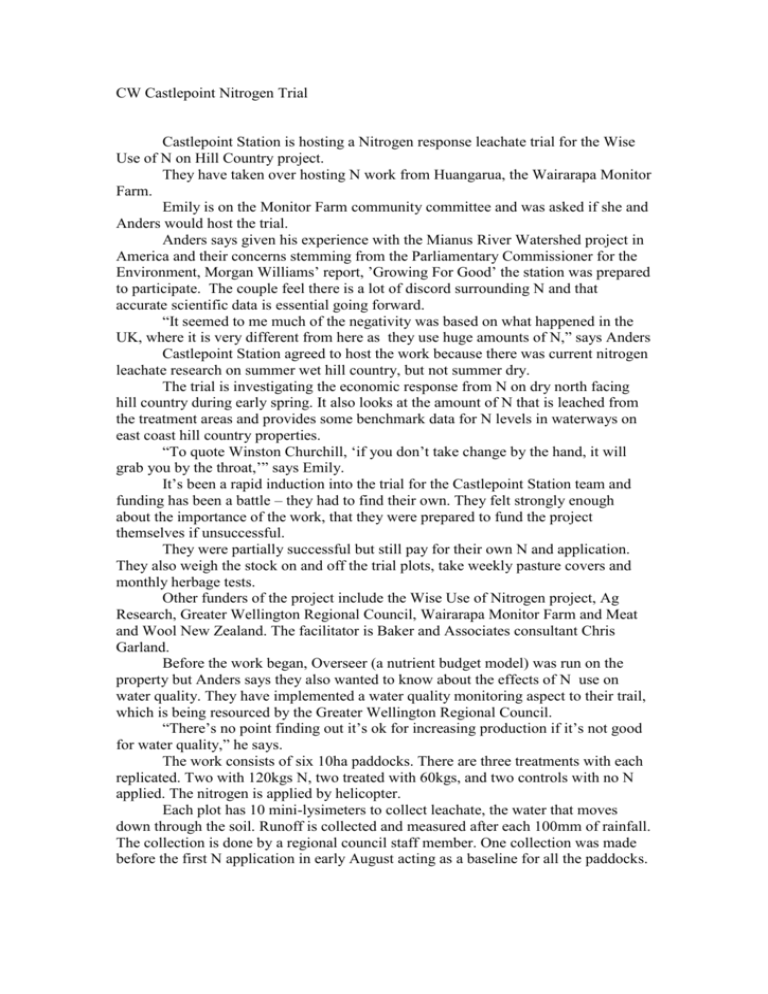
CW Castlepoint Nitrogen Trial Castlepoint Station is hosting a Nitrogen response leachate trial for the Wise Use of N on Hill Country project. They have taken over hosting N work from Huangarua, the Wairarapa Monitor Farm. Emily is on the Monitor Farm community committee and was asked if she and Anders would host the trial. Anders says given his experience with the Mianus River Watershed project in America and their concerns stemming from the Parliamentary Commissioner for the Environment, Morgan Williams’ report, ’Growing For Good’ the station was prepared to participate. The couple feel there is a lot of discord surrounding N and that accurate scientific data is essential going forward. “It seemed to me much of the negativity was based on what happened in the UK, where it is very different from here as they use huge amounts of N,” says Anders Castlepoint Station agreed to host the work because there was current nitrogen leachate research on summer wet hill country, but not summer dry. The trial is investigating the economic response from N on dry north facing hill country during early spring. It also looks at the amount of N that is leached from the treatment areas and provides some benchmark data for N levels in waterways on east coast hill country properties. “To quote Winston Churchill, ‘if you don’t take change by the hand, it will grab you by the throat,’” says Emily. It’s been a rapid induction into the trial for the Castlepoint Station team and funding has been a battle – they had to find their own. They felt strongly enough about the importance of the work, that they were prepared to fund the project themselves if unsuccessful. They were partially successful but still pay for their own N and application. They also weigh the stock on and off the trial plots, take weekly pasture covers and monthly herbage tests. Other funders of the project include the Wise Use of Nitrogen project, Ag Research, Greater Wellington Regional Council, Wairarapa Monitor Farm and Meat and Wool New Zealand. The facilitator is Baker and Associates consultant Chris Garland. Before the work began, Overseer (a nutrient budget model) was run on the property but Anders says they also wanted to know about the effects of N use on water quality. They have implemented a water quality monitoring aspect to their trail, which is being resourced by the Greater Wellington Regional Council. “There’s no point finding out it’s ok for increasing production if it’s not good for water quality,” he says. The work consists of six 10ha paddocks. There are three treatments with each replicated. Two with 120kgs N, two treated with 60kgs, and two controls with no N applied. The nitrogen is applied by helicopter. Each plot has 10 mini-lysimeters to collect leachate, the water that moves down through the soil. Runoff is collected and measured after each 100mm of rainfall. The collection is done by a regional council staff member. One collection was made before the first N application in early August acting as a baseline for all the paddocks. No results were available at publication time, but a field day where trial data will be presented and discussed is being held on Castlepoint Station on Monday, May 15 starting at 12.30pm.








